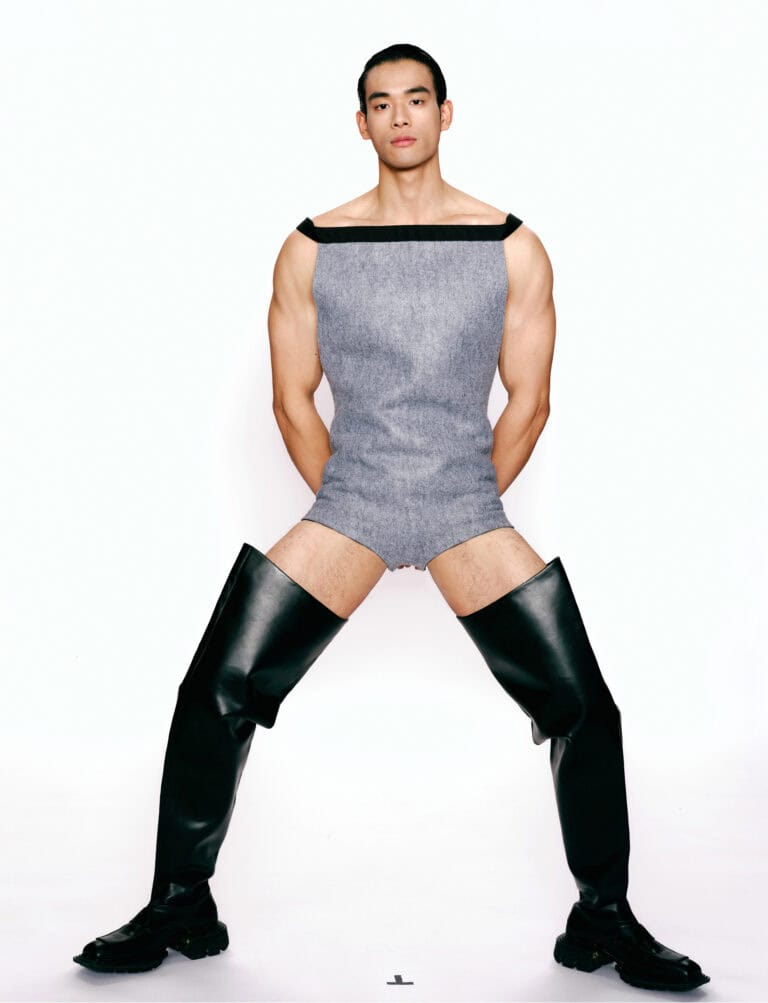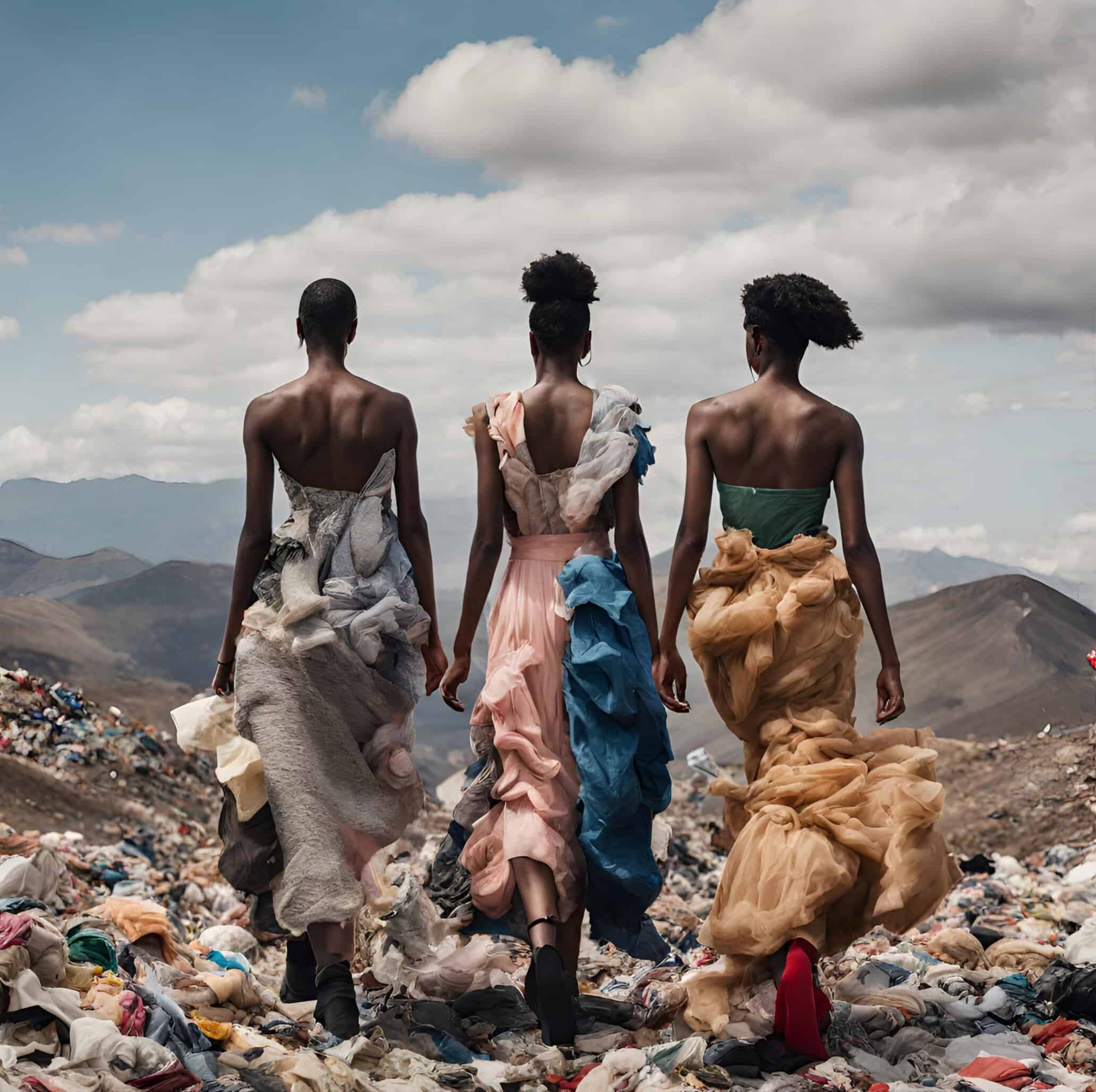
The Unsustainable Stitch: Unraveling Fashion’s Textile waste
Patrick Duffy
Beneath the dazzling façade of couture gowns and avant-garde silhouettes, a dark underbelly festers within the world of fashion. Like a glittering moth drawn to a toxic flame, we, the insatiable consumers, chase the ever-shifting tides of new. Oblivious to the devastation woven into the very fabric of our obsession. This insatiable hunger, fueled by the relentless churn of fast fashion. The seductive whispers of marketing, has become a tangled web of environmental ruin and ethical nightmares. “The average US consumer throws away 81.5lbs of clothes every year. In America alone, an estimated 11.3 million tons of textile waste, equivalent to 85% of all textiles, end up in landfills on a yearly basis. That’s equivalent to approximately 2,150 pieces per second countrywide.” via Earth Org.
Imagine, if you will, a runway not sleek and shiny and filled with models. But of mountains, mountains of discarded clothing, each garment a silent monument to our fleeting desire. This is the reality, the Everest of textile waste we summit with every impulsive purchase. Every succumbs to the siren song of new. The EPA cites that textile production is estimated to be responsible for about 20% of global clean water pollution. From dyeing and finishing products. Laundering synthetic clothes accounts for 35% of primary microplastics released into the environment. The air, once perfumed with exotic fragrances, is choked with the toxins of synthetic dyes. Rivers that once shimmered with the reflection of high-fashion jewels now run black with the effluent of unchecked production. This is not a dystopian fantasy. It is the present we dance to, the invisible seams of our garments stitched with the blood of our planet.
Sixty-three percent of Gen Z and millennials believe they can reduce their individual footprint
But fashion, like a cunning couturier, drapes itself in the allure of artistry and self-expression. It conjures tales of belonging, of reinvention, of a life curated in perfectly pressed pleats and meticulously chosen hues. We yearn to be characters in its grand narrative. To wear the costumes of success, of liberation, of forever fitting in. And the industry, a master storyteller, exploits these vulnerabilities, weaving desires into trends, anxieties into marketing campaigns. We buy not just clothes, but promises, fleeting glimpses of ourselves reflected in the polished glass of a boutique window.
Yet, amidst the cacophony of “must-haves” and “latest trends,” a rebellion is rising. A new generation, draped in vintage finds, swapped and upcycled treasures, is rewriting the script. They see the emperor’s new clothes for what they are – unsustainable, unethical, and ultimately, hollow. Craving authenticity, not the fleeting validation of a logo. They choose quality over quantity, slow fashion over fast fads, timeless elegance over disposable trends. According to Vogue Business, sixty-three percent of Gen Z and millennials believe they can reduce their individual footprint. Compared to 55 percent of consumers overall.
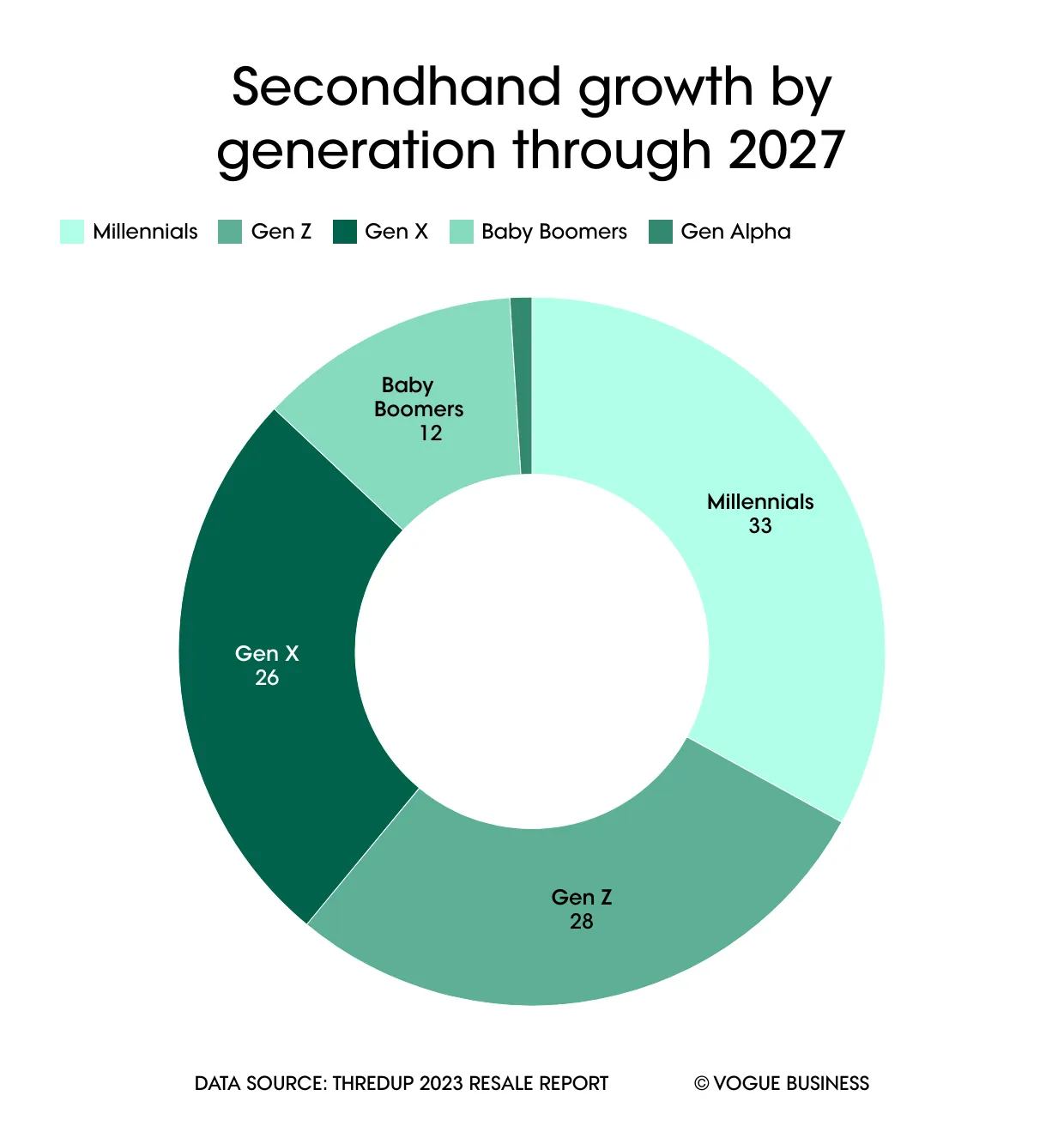
The brands most responsible for fashion’s waste crisis should play a role in cleaning it up
This is not just a rejection of fast fashion. It is a revolution in our relationship with clothing, a reclaiming of the narrative. We are the editors of our own stories. The clothes we choose are the brushstrokes with which we paint them. Let us, then, wield these brushes with intention. With an eye towards sustainability and consciousnes. Towards ethical practices, towards stories whispered not in fleeting trends, but in the enduring language of quality and conscious consumption. We need to rewrite the narrative, not just of fashion. But of our relationship with the world we inhabit, one carefully chosen stitch at a time.
“The brands most responsible for fashion’s waste crisis should play a role in cleaning it up. Which is why we are calling for Extended Producer Responsibility policies to be Globally Accountable. Extending critical resources to communities like Kantamanto who are on the front lines. Who have been doing the work of circularity for decades.” Liz Ricketts, cofounder of the Or Foundation
The Or Foundation is the facilitator of the Stop Waste Colonialism Campaign. Waste colonialism is when a group of people uses waste and pollution to dominate another group of people in their homeland. The term was first recorded in 1989 at the United Nations Environmental Programme Basel Convention. When African nations expressed concern about the dumping of hazardous waste by high GDP countries into low GDP countries. Waste Colonialism is typically used to describe the domination of land for the use of disposal. Also referred to as a “sink”. This is quite visible in the context of Accra’s Kantamanto Market, the largest secondhand market in the world. SIgn the pettiton and help make extended producer responsability globally accountable.
https://youtube.com/watch?v=mJfrAnmjUHk%3Fautoplay%3D0%26mute%3D0%26controls%3D1%26origin%3Dhttps%253A%252F%252Fwww.irkmagazine.com%26playsinline%3D1%26showinfo%3D0%26rel%3D0%26iv_load_policy%3D3%26modestbranding%3D1%26enablejsapi%3D1%26widgetid%3D1
Beyond the Runway: Fashion’s Invisible Footprint Leaves a Deep Mark
The industry’s impact stretches far beyond overflowing landfills. It’s a thirsty behemoth, consuming a staggering 20% of the world’s wastewater and jeopardizing delicate ecosystems with toxic dyes. It devours vast swathes of land, razing forests for cotton farms and contributing to widespread deforestation. And its carbon footprint is a colossal shadow, accounting for a staggering 8-10% of global emissions. Exceeding international flights and maritime shipping combined. Fashion’s invisible footprint leaves a deep, indelible mark on our planet.
Robert Meeder, Co-Founder of The Institute of Future Creations, highlights a critical aspect of textile waste. ‘While post-consumer fashion waste is gaining awareness, the larger issue of post-industrial waste remains overlooked.
In Asia, where I’ve seen numerous factories facing this issue. The topic is rarely addressed in markets where these products are consumed. Imagine before a garment reaches the consumer, 10-15% of it is already waste or has been thrown to landfill. Considering millions of garments, this equates to tonnes of textile waste monthly. This isn’t just discarded material or fluff from the sewing machines. It includes new, unused textiles and trims ordered as surplus. Often, this ‘excess-order’ material, (mistakenly termed ‘waste’), is burned in cement factories or sold in grey markets, aggravating carbon emissions. It’s vital for designers, especially in the global North, to consider the waste generated even before their designs are sold. To ask their suppliers the hard question – how much waste did I make?’”
Decoding the Psychology of Consumerism: Why We Crave More, Even When Our Closets Overflow
But what fuels this insatiable appetite for clothing? We buy more than ever, our wardrobes overflowing, yet we remain inexplicably drawn to the seductive whisper of “new.” This phenomenon is a complex tapestry woven with psychological triggers:
- The Fast Fashion Frenzy: The industry thrives on a “take, make, dispose” model. Churning out trendy, disposable garments at breakneck speed. This relentless cycle of “newness” is fueled by marketing and social media. Manipulating our desires and keeping us hooked on the fleeting thrill of the latest fad.
- Emotional Triggers: Fashion taps into our deepest yearnings for belonging, identity, and self-expression. Brands exploit these vulnerabilities, imbuing clothing with emotional significance, often eclipsing practicality or sustainability. We buy not just clothes, but a feeling, a sense of belonging, a temporary escape from the mundane.
- The Obsolescence Trap: Garments are deliberately designed to fade, fall apart, or go out of style. Forcing us into a perpetual cycle of replacement. This planned obsolescence keeps the wheels of the industry turning, but at the expense of our environment and our wallets.
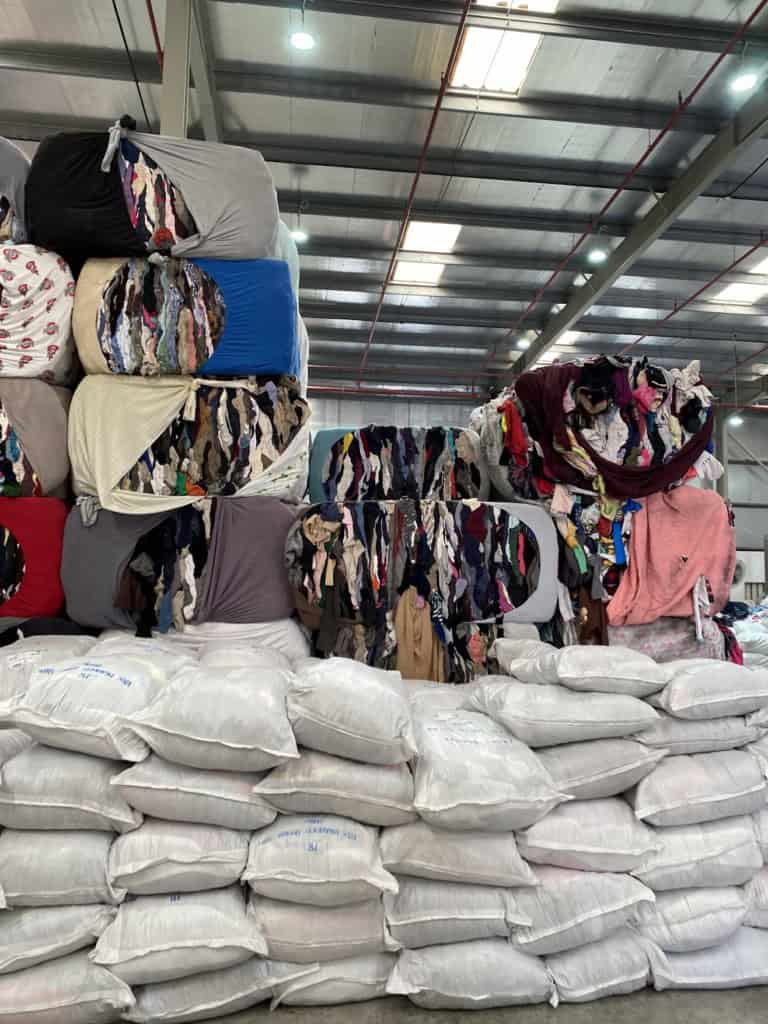
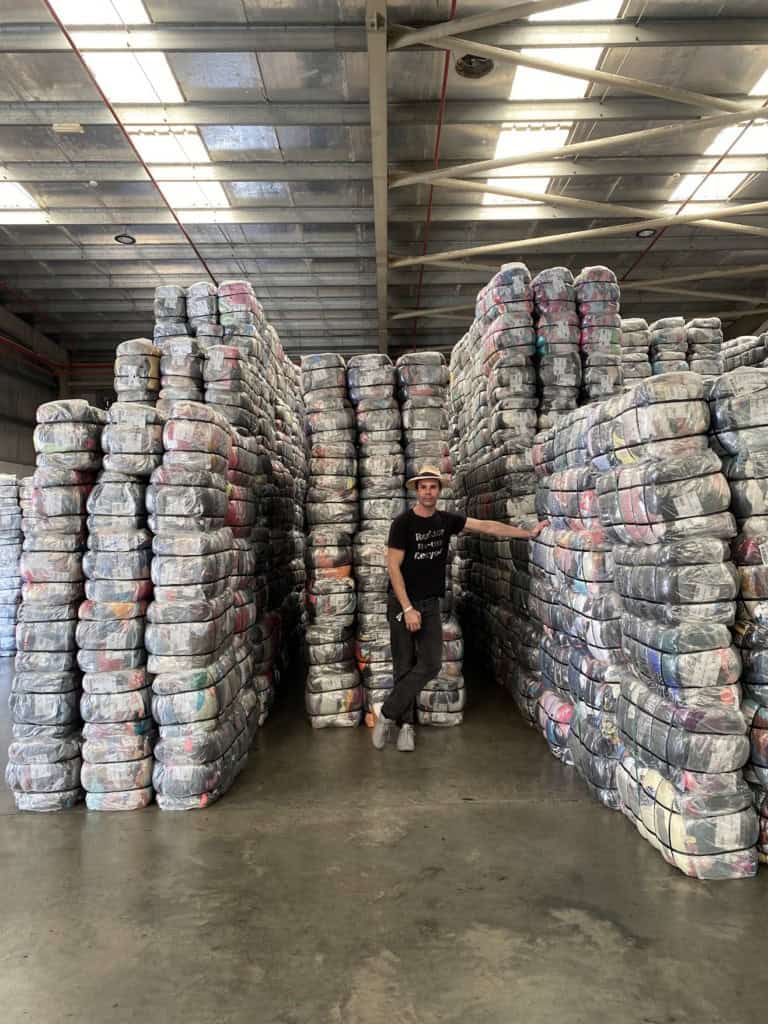
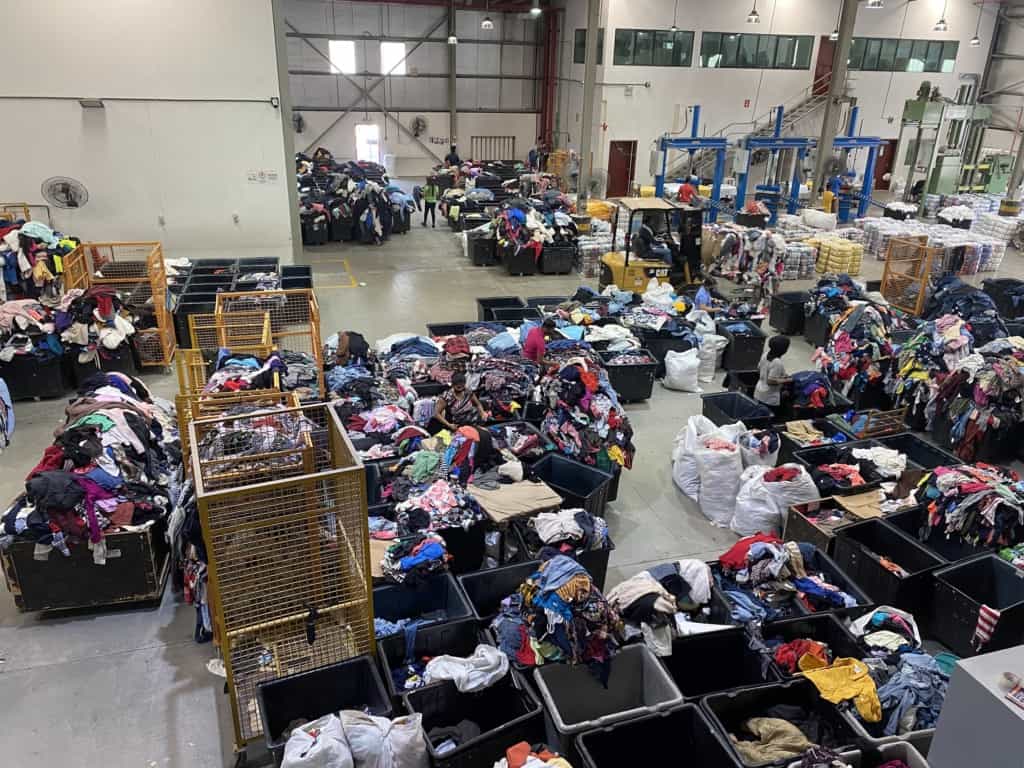
Patrick Duffy at recycling facility outside Dubai receives 40,000 kilos of clothing per day
“Mass production and overproduction tell us nothing more than that it is an industry, that of fashion. Which has now lost all efficiency from the point of view of controlling its resources, its waste”. Orsola De Castro, Creative Director. Estethica Fashion + Co Founder, Fashion Revolution.
Reweaving the Fabric of Fashion: Stitching Together a Sustainable Future
The current trajectory is unsustainable. We need a transformative shift, a radical reimagining of fashion where style and ethics dance in harmony. This requires:
- Transparency and Accountability: Brands must shed their cloak of secrecy, disclosing their production volumes, environmental impact, and labor practices. Consumers deserve to know the true cost of their clothing, the human and environmental price woven into each stitch.
- Embracing Slow Fashion: We must move beyond the fleeting trends. Embrace timeless pieces, handcrafted with love and built to last. Investing in durable, quality garments we cherish is an act of defiance against the fast fashion frenzy. Repairing, upcycling, and buying second-hand are all threads in this sustainable tapestry.
- Sustainable Materials: We must break free from environmentally damaging cotton and synthetic fibers and embrace innovative alternatives. Organic cotton, recycled materials, and plant-based fabrics offer a greener path forward, a stitch towards a less resource-intensive future.
- Ethical Labor Practices: The human cost of fashion must be eradicated. Fair wages, safe working conditions, and respect for human rights must be woven into the very fabric of every garment. Consumers have a responsibility to choose brands that prioritize ethical practices, ensuring their clothing is not tainted by exploitation.
“Consumer demand can revolutionize the way fashion works as an industry. If everyone started to question the way we consume. We would see a radically different fashion paradigm”. Carry Somers, Co-Founder of Fashion Revolution and League Of Artisans
A Conscious Runway: Fashion as a Force for Good
“The fashion industry can be a force for good, not environmental destruction. By addressing overconsumption, embracing slow fashion, and prioritizing sustainability, we can rewrite the narrative.” Kerry Bannigan. Co-Founder, United Nations Fashion and Lifestyle Network and Executive Director, Fashion Impact Fund. “This would transform the retail environment into a platform for conscious choices. Where style and ethics come together to create a future where fashion flourishes without sacrificing our planet.” Every conscious clothing choice we make, every thread of awareness we spread. Can help us unravel the unsustainable fabric of fashion and weave a tapestry of hope.
Aligning our fashion choices with the UN Sustainable Development Goals (SDGs). Can guide us towards a more responsible and equitable future. SDG 12, for example, calls for responsible consumption and production. Urging us to reduce waste and promote resource efficiency – a perfect fit for the slow fashion movement. Next is SDG 5, focused on gender equality. Demands the ethical treatment of garment workers, particularly women, who often make up the majority of the workforce. SDG 15, protecting life on land, reminds us of fashion’s impact on ecosystems and the need for sustainable material choices.
Beyond the Conscious Closet: Ushering in Systemic Change with Policy and Innovation
While individual choices are essential, tackling fashion’s environmental Goliath demands a broader stroke. Policy changes and industry-wide collaboration are crucial weapons in our arsenal. Governments must step onto the runway, armed with regulations that curb textile waste, incentivize sustainable practices, and hold brands accountable for the environmental footprint they leave behind. The New York Fashion Act, spearheaded by sustainability champion Maxine Bedat, serves as a powerful blueprint. This groundbreaking legislation proposes comprehensive environmental and social accountability measures for brands selling within the state, paving the way for similar initiatives across the globe.
Collaboration, not competition
But legislation alone cannot stitch shut the gaping wounds in fashion’s fabric. The industry itself must embrace a metamorphosis. “The Fashion Act is common sense legislation that enables the industry to work together on common goals. This is an industry that shares suppliers, so no one company – no matter how well meaning – can do it alone” says Bedat. Collaboration, not competition, is the new haute couture. Imagine a future where scientists and designers join forces to weave innovative materials like Circulose, a new material made by recycling cotton from worn-out clothes and production waste, or where cutting-edge recycling technologies transform discarded garments into vibrant new creations. Circular economy models, where resources are perpetually repurposed and waste minimized, can become the industry’s new must-have accessory.
This isn’t just a pipe dream; it’s a runway waiting to be walked. Standout brands like Studio 189, Orange Culture, Iris Van Herpen, Stella McCartney, Kevin Germanier, and Patagonia are already strutting their stuff in this arena, proving that sustainability and style can be bedazzling partners. By embracing innovation and collaboration, the entire fashion industry can shed its unsustainable skin and emerge as a champion for our planet, proving that true beauty lies not in fleeting trends, but in timeless responsibility.
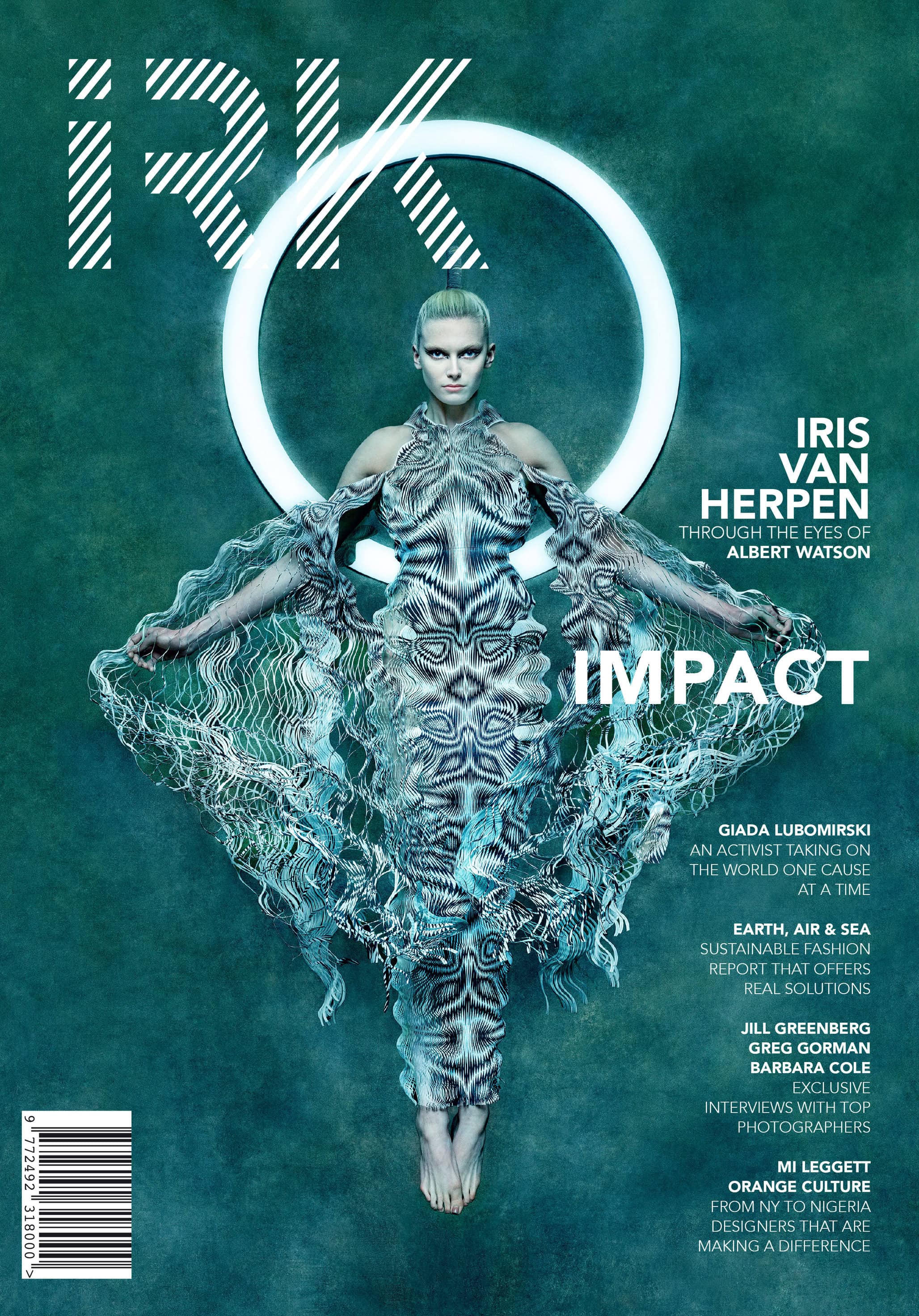
Changing our mindset
This is not just about changing clothes, but about changing our mindset, shifting from the fleeting thrill of “perpetual newness” to the enduring satisfaction of quality, sustainability, and ethical practices. Valuing timeless pieces over trendy fads, and investing in garments that reflect our values and respect our planet. This is not just a fashion revolution, but a cultural shift towards conscious consumption, shared responsibility, and a future where fashion flourishes without leaving a trail of devastation.
Remember, the power to change the narrative lies in our hands. Every stitch we choose, every brand we support, and every conversation we spark, can unravel the unsustainable fabric of the past and weave a brighter future for fashion. The future can be bright if we embrace the responsibility of conscious consumers, and together, reimagine the fashion industry as a force for good, a tapestry woven with style, consciousness, and hope.
Share this post
Patrick Duffy is the founder of Global Fashion Exchange, a company catalyzing positive impact through strategic consulting roadmaps focusing on supply chain transparency, worker rights, responsible production for B2B as well as consumer facing programming and community building focusing on aligning people or communities with the SDGs.
Experience developing networks and activating ideas, guiding creative teams globally, and working with institutions like the Victoria and Albert Museum and UNESCO, and iconic spaces such as Federation Square Melbourne, Madison Square Garden, Bryant Park in New York City, and The Dolby Theatre in Los Angeles.
Patrick has produced clothing swaps all over the world from, with GFX Active in over 100 countries. Each GFX event focuses on building community, education and transformational business models. Partnering with global brands, key stakeholders, and academia to help create awareness and positive impact through conscious consumption
Patrick harnesses the power of media to create positive social and environmental impact. Through storytelling, education, and advocacy, he raises awareness, inspires action, to catalyze change. By highlighting issues and solutions, Patrick creates strategic campaigns to engage audiences, influence attitudes and behaviors, and contribute to a more sustainable and just world. Additionally, Patrick is the Sustainability and Positive Impact Director of Paris based @IRKMagazine and Editor In Chief of @IRKLiving
Patrick has produced and co-curated events and marketing/PR campaigns for recognized brands across art, fashion, and tech spaces including @virginhotels @britishfashioncouncil @mspdid @moethennessy @microsoft @lagosfashionweekofficial @perutradenyc @fashionimpactfund @istitutomarangonidubai @peaceboatus @lisboafashionweek and more spanning 15 years and hundreds of events in 5 continents.
Read Next



